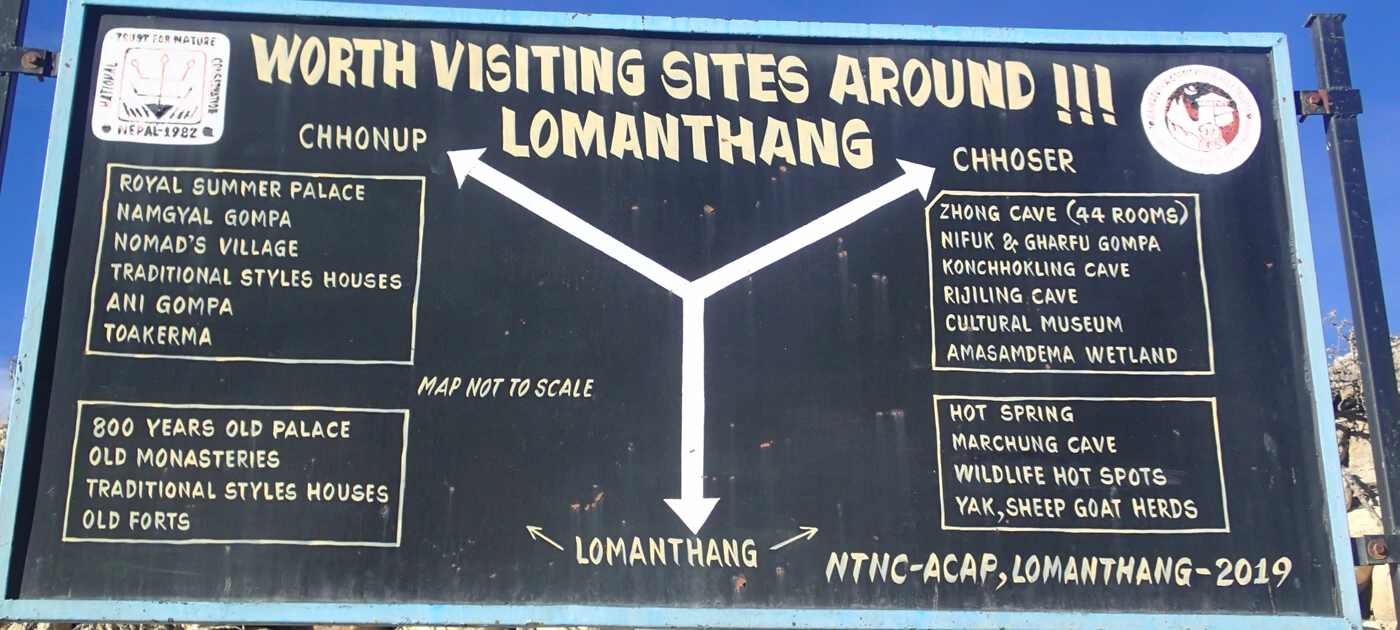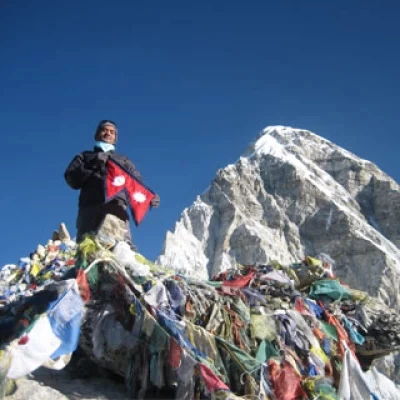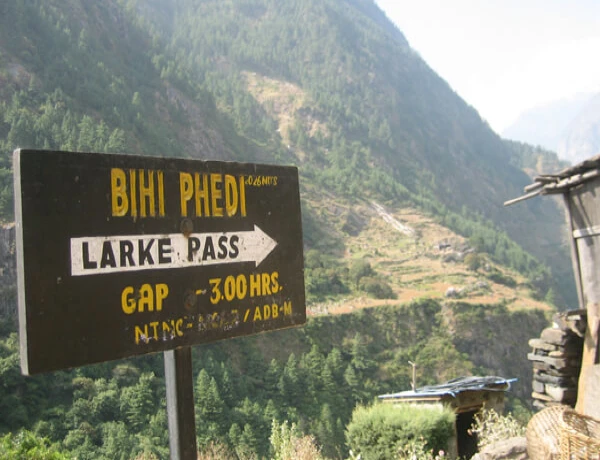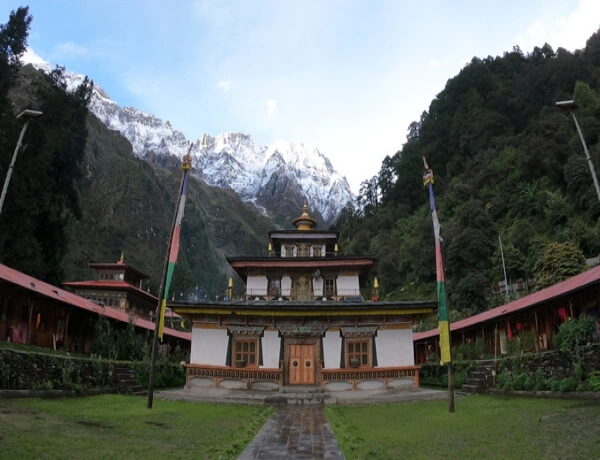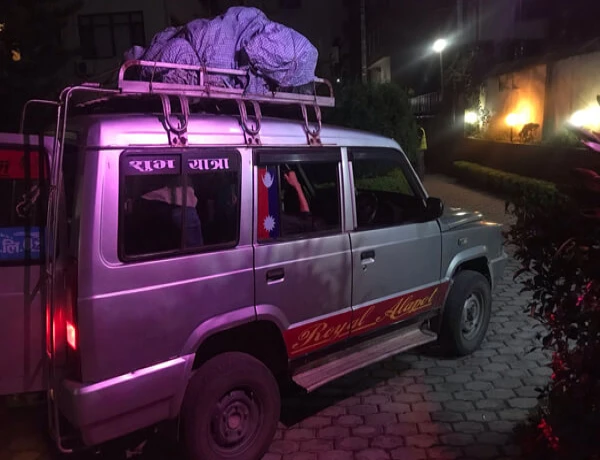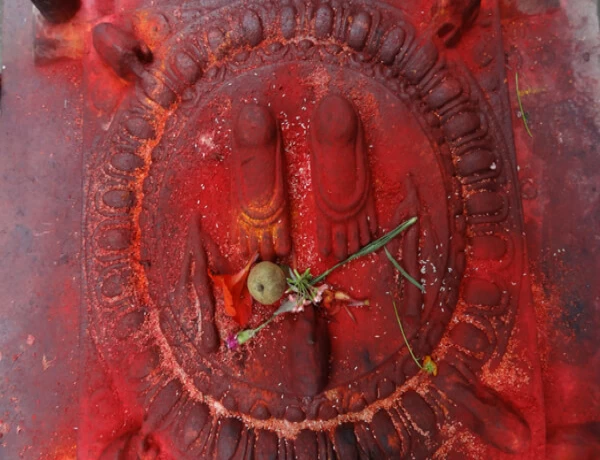Travelers can explore the Upper Mustang through various means, such as jeep rides or direct helicopter flights, but trekking is highly recommended. Trekking provides the chance to explore uncharted territory, immerse oneself in the local culture, traditions, religion, and way of life, and take in the surrounding natural wonders.
In this blog, we will expand on the magic of Upper Mustang, offering you a complete guide to one of the most extraordinary and captivating trekking destinations in the world. Get ready to embark on an unforgettable adventure, where every step reveals an enchanting tale of history, culture, and unparalleled beauty.
What Upper Mustang Is All About.
Nestled deep within the majestic Himalayas, Upper Mustang stands as a true gem of Nepal -
Upper Mustang was once considered a forbidden kingdom, closed off to the outside world until the 1990s. Even today, this region is categorized as a "restricted area" of Nepal, which means obtaining a special permit is necessary to explore its hidden treasures. The crown jewel of this ancient kingdom is Lo Manthang, an awe-inspiring walled city that takes us back in time.
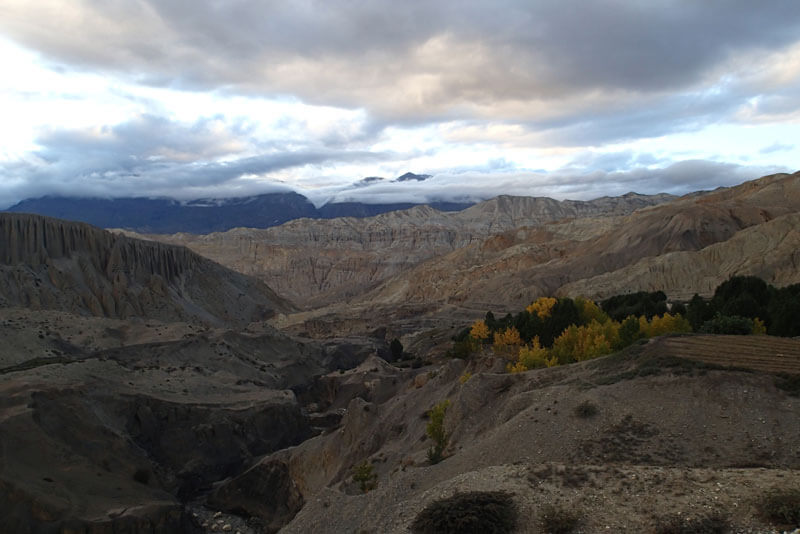
As you traverse through Upper Mustang, you'll discover a land that seems untouched by the fast-paced modern world. It's a journey that takes you back in time, where ancient traditions still hold strong and where the spirituality of the Himalayas engulfs you. The sacred monasteries, the intricate caves, and the resplendent views of the Nilgiri, Annapurna, and Dhaulagiri mountains all contribute to the aura of mystique that envelops this region.
But it is not just the landscapes and cultural heritage that make Upper Mustang a must-visit destination. Visitors are warmly welcomed by the locals, who are renowned for their kindness and warm hospitality. Their genuine smiles and genuine care for travelers create an unforgettable experience, making them an integral part of the journey.
Where is the Upper Mustang?
Upper Mustang, in the Gandaki Province of Nepal, is found within the Mustang district, which is divided into two parts: Upper Mustang and Lower Mustang. Lower Mustang encompasses the area up to Muktinath (Ranipauwa) and Kagbeni, while the region beyond that, extending up to the Tibet border, is known as Upper Mustang.
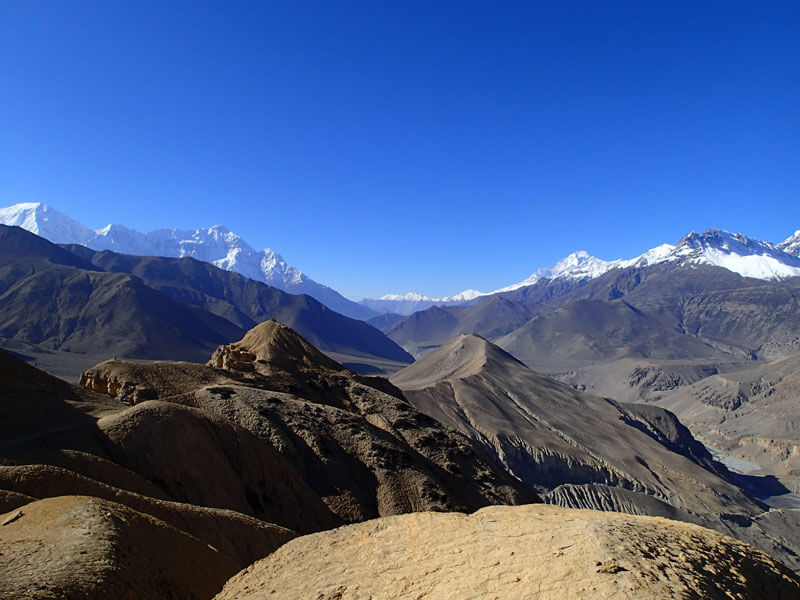
Upper Mustang is located in the rain shadow of Nepal's trans-Himalaya region, nestled between the Annapurna and Dhaulagiri mountain ranges. The sacred Kali Gandaki River divides the area, which is a part of the Annapurna Conservation Area.
Explore the Upper Mustang Trek
The Upper Mustang Trek offers an unforgettable multi-day experience, allowing trekkers to immerse themselves in the tranquil and breathtaking landscapes of the Upper Mustang region. The trek's duration can be tailored to suit individual preferences, ranging from 7 to 14 days, providing flexibility for travelers to choose their preferred itinerary.
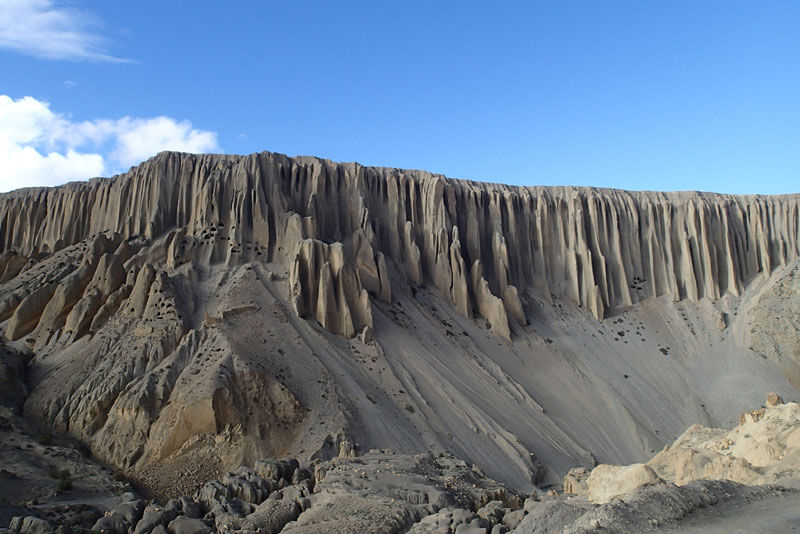
Many travel enthusiasts consider this trek a must-do experience. It takes adventurers on a captivating journey, passing by ancient settlements, picturesque apple gardens, and centuries-old monasteries. The route is adorned with awe-inspiring landscapes, offering a visual feast at every corner.
Reaching the renowned Lo Manthang, also known as the Forbidden Kingdom of Lo, where a charming, walled-off ancient Tibetan town awaits exploration, is the ultimate reward of the journey.
Lo-Manthang, The Capital of the Upper Mustang
Lo Manthang serves as the ultimate destination during the Upper Mustang Trek. This ancient Tibetan town holds a central position within the heart of Upper Mustang, surrounded by a massive protective wall. Originally constructed as a defense against potential invaders, the walled city of Lo stands as a testament to the region's rich history.
Beyond its defensive purpose, the wall contains not only settlements but also multiple centuries-old monasteries. These sacred places have endured over time, preserving the profound spiritual and cultural heritage of the area. Additionally, hotels and tea houses are available outside of Lo Manthang, making it easy for visitors to the area to find comfortable lodging and refreshment options.
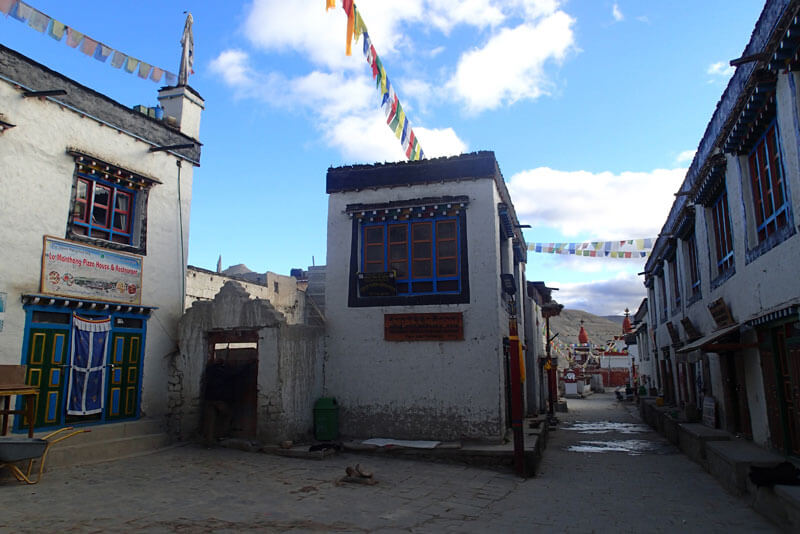
Lo Manthang, with its well-preserved traditions and lifestyle, becomes a central attraction during the trek. Visitors witness a glimpse of the timeless settlement, where ancient practices and customs persist to this day. This combination of history, spirituality, and a touch of modernity makes Lo Manthang an unforgettable and mesmerizing experience for all who venture into this enchanting town.
Why Choose the Upper Mustang Trek?
If you still have a question, “Why choose the Upper Mustang Trek?” then here is the answer for that:
1. The Monsoon-Proof Upper Mustang Trek: A Rain-Shadow Adventure.
The allure of the Upper Mustang Trek lies in its strategic location within the rain shadow of the Trans-Himalayas. While other trekking routes might struggle during the monsoon season, Upper Mustang remains a sturdy and reliable option for adventure enthusiasts. Its rain shadow setting shields it from the heavy downpours and challenges that afflict many other trails, making it an ideal destination for trekking even during the wettest months.
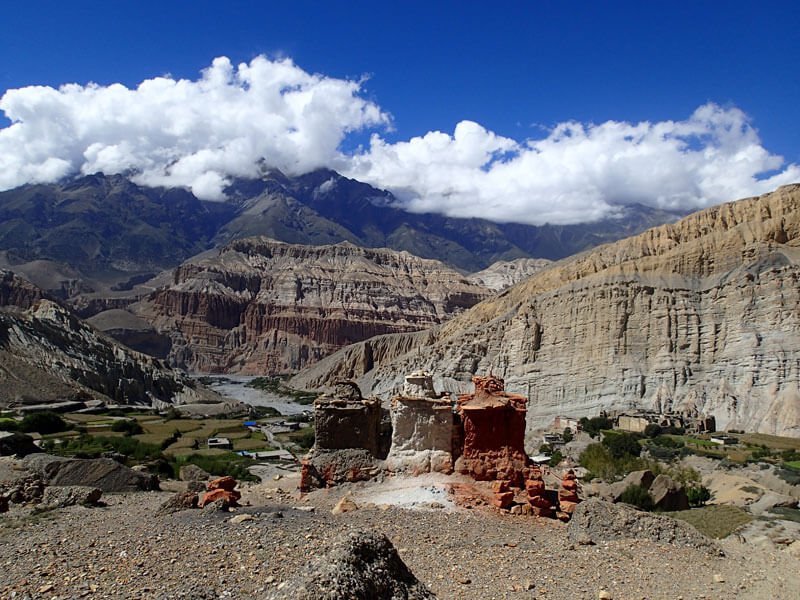
Unlike other destinations, Upper Mustang welcomes trekkers all year round, with each season offering its allure. During the monsoon, the Upper Mustang Region becomes surprisingly greener, showcasing dramatic cloud patterns and a mystic ambiance. With its unbeatable rain shadow advantage, Upper Mustang promises an enchanting and adventure-filled journey like no other.
2. Unveiling the Mysteries of the Ancient Cave Civilization: Upper Mustang Trek.
Stepping into the Upper Mustang takes you on a journey back in time, as it houses one of Nepal's oldest civilizations. Scattered across this mystical landscape lie numerous primitive caves, once inhabited by ancient people. Observe these primitive dwellings, carved like windows into the cliffs, as testaments to a bygone era. Beyond their ancient significance, some caves hold sacred value, having been meditative abodes for tantric gurus whose presence still reverberates to this day.
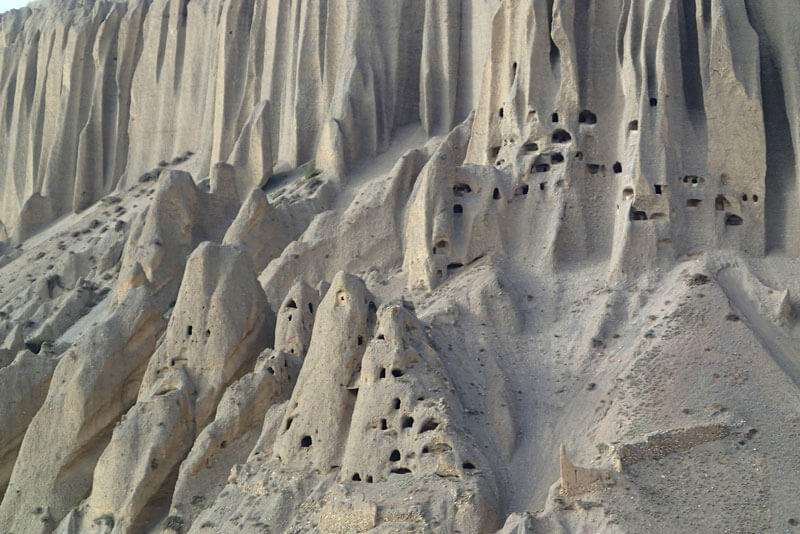
Despite our knowledge, many enigmatic secrets of these ancient caves remain untold, shrouded in the mists of history. Solving these puzzles has become a central attraction for trekkers, eager to uncover the secrets that the ancient civilization of Upper Mustang holds within its caves. A trek to this wondrous region offers a unique opportunity to read the captivating tales of the past, leaving travelers with an indelible sense of wonder and awe.
3. Experience the Enchanting Tibetan Culture and Traditions of Upper Mustang.
Nestled in the bordering area of Tibet, Upper Mustang is a realm steeped in the rich tapestry of Tibetan culture and tradition. The region has distinctive norms, values, and customs that set it apart from other areas of Nepal as a result of its proximity to Tibet. The locals don distinctive attire and follow age-old practices, preserving their time-honored way of life.
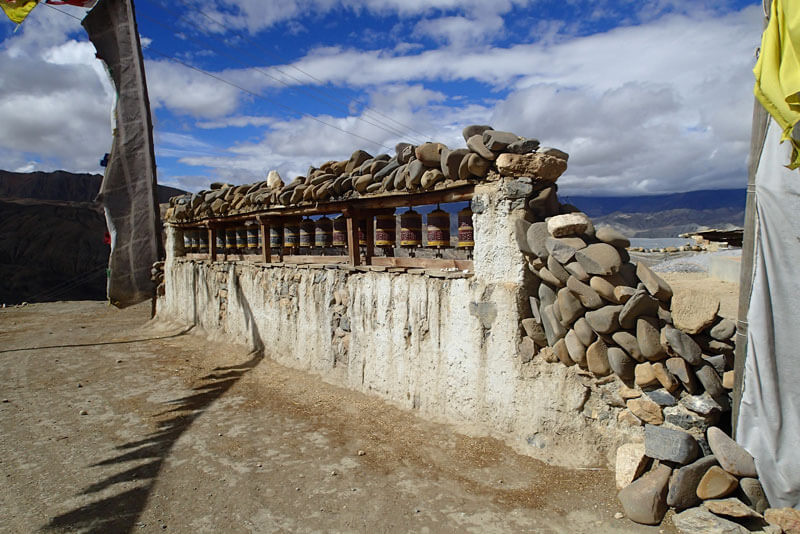
The Tibetan language echoes through the hills and valleys, bonding the communities together in a shared heritage. The people of Upper Mustang lead a traditional lifestyle, tending to herds of Kashmiri goats and yaks, reflecting their deep connection to the land and its resources. A trek through this culturally vibrant terrain offers an enchanting glimpse into the preserved traditions and warmth of Tibetan culture, leaving visitors captivated by its allure.
4. Vibrant Festivals of Upper Mustang: Celebrating Tradition and Spirituality.
The vibrant festivals of Upper Mustang embody the region's rich culture and traditions, with a tapestry of celebrations and rituals. Some festivals hold religious significance, honoring deities and seeking world peace, while others are joyous occasions for connecting with loved ones and exchanging happiness.
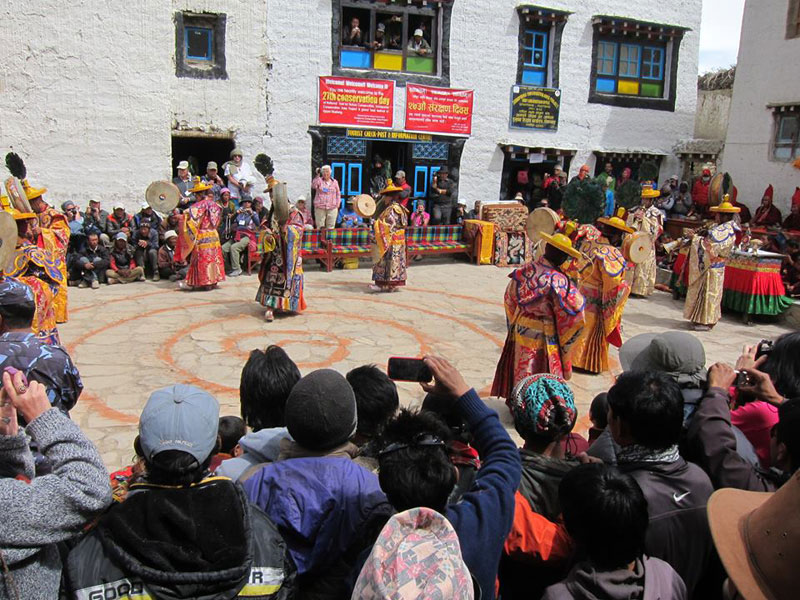
Among the notable festivals are Tiji, Yartung, and Losar. Tiji Festivals, observed in May as per the lunar calendar, span three days and signify a plea for global harmony. Yartung, celebrated during the full moon in August, brings joy through merrymaking, dancing, and horse racing. Losar marks the ethnic people's new year, rejoicing in fresh beginnings. These colorful festivities not only unite locals in their spirit of merriment but also entice tourists, drawn by the allure of authentic traditions and the exuberant ambiance.
5. Exploring the Martian Landscape: Upper Mustang—The Red Planet of Earth.
Upper Mustang beckons with its extraordinary and distinct landscapes, resembling Martian terrain. The region's reddish hills, awash with rich colors, earned it the nickname "the red planet of Earth." Its unique landscape stems from its location on the Tibetan plateau.
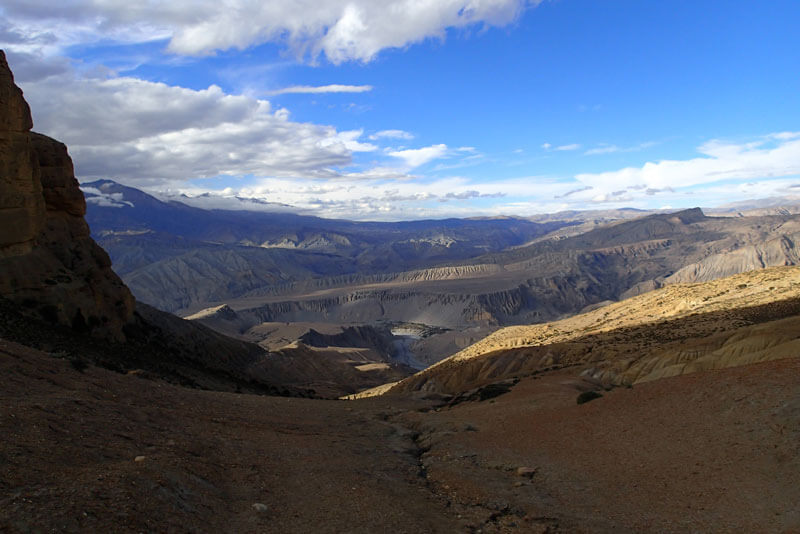
Roaming through this otherworldly terrain, one might feel like venturing into a vast desert reminiscent of the Grand Canyon. As you traverse, breathtaking panoramic vistas of the Dhaulagiri and Annapurna Himalayan ranges grace the horizon, unfolding before your eyes. Upper Mustang's unmatched scenery leaves travelers in awe as they tread upon a mystical realm that feels truly otherworldly.
6. Sacred Haven: Exploring the Religious Holy Sites of Upper Mustang
The Upper Mustang exudes a deeply religious and spiritual aura, captivating those who seek sacred havens. Among these divine sites, Lo Gekar is Nepal's oldest monastery, having laid its foundations 1300 years ago. Serving as a revered Buddhist school, its significance reverberates not only in Nepal but also resonates across the borders of Tibet.
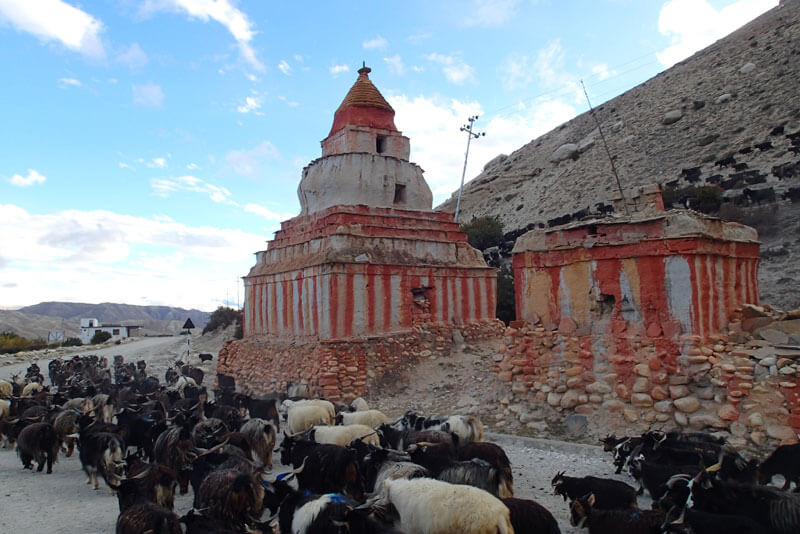
An integral part of the sacred count of 108 gompas, Lo Gekar holds a strong spiritual bond with Padmasambhava. Alongside this ancient treasure, there are other potent holy sites like Luri Gompa, which boasts a natural formation called Kabung, a revered spiritual site.
Adding to the spiritual tapestry is the renowned Muktinath Temple, cherished by both Hindus and Buddhists alike. As you venture through this sacred landscape, you'll be immersed in the profound spirituality and timeless devotion that encapsulate the essence of Upper Mustang.
Upper Mustang Trek Route: Option for Exploration
The Upper Mustang trek offers various routes, including both trekking and road trip options. However, we are focusing solely on Upper Mustang trekking with Luri Gumba to avoid the road.
The main trekking trail runs from Kagbeni to Lo Manthang, passing through charming villages like Chhusang, Syanboche, and Charing. This well-known route is the highlight of the Upper Mustang trek. However, in this itinerary, the trail primarily follows the eastern side of the valley,avoids the road, through the Fly to Jomsom, Kagbeni, Muktinath, Chhusang via Gyu La Pass (4077m), Tangge from Chhusang via Pa Pass (4210m), Yara, Visit Luri Gumba, go to Lo Manthang via Dhi La (3950m) & La (Day) La (3950m), go to Chhoser Jhong Cave, or drive to Kora La (Nepal-Tibet border), drive to Jomsom from Lo Manthang, and return by jeep along the road on the western side. There is an alternative, less-visited route that leads through settlements such as Tetang, Tangge, and Yara.
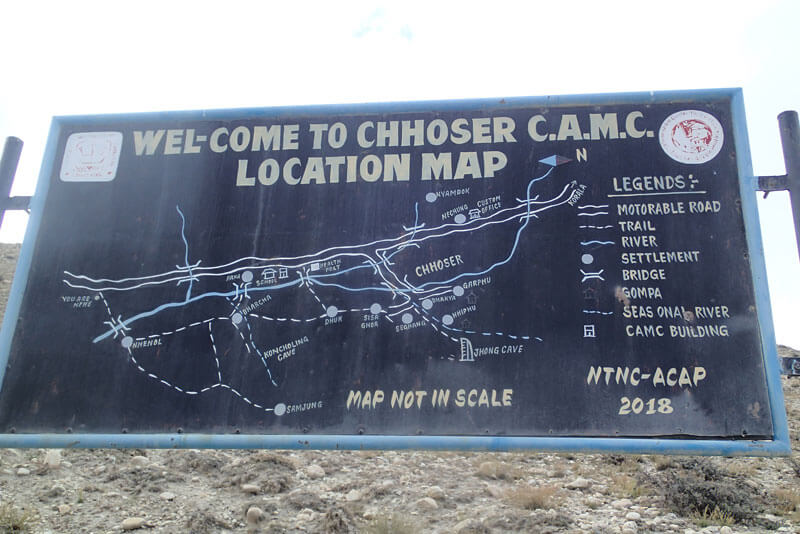
Moreover, there are other attractive alternative routes available, like the Damodar Kunda Trek, Mustang Phu Trek, Teri La Pass Trek, and so on. Some routes offer accommodation and food facilities, while others may require camping. These less frequented paths are perfect for escaping busy trails and finding inner peace amid the serene landscapes of Upper Mustang.
Can we go to the Tibet Border during the Upper Mustang trek?
Yes! Generally, the Upper Mustang Trek permits you to visit the Tibet border. The Lo Manthang to Korala distance is about 20 kilometers (12 mi) by road. Koral La Naka (Border) is 4,600 meters, where established number 24 Pillar was established at 10 Gaja Kshatra (the border of Tibetan, Chinese, and Nepalese territory is joined). You can photograph the 24-Number Pillar, but you can't touch it or put anything on it. It strictly prohibits you from touching the pillar or supporting your body on it. Don't step on it with your foot. You can go to a nearby pillar and take a picture with a view of it, but don't touch it. Do not cross the fence surrounding the Pillar, as it marks the territory of Tibet (China). You are not allowed to go to China, but you can buy a limited amount of souvenirs, such as chocolate and alcoholic drinks, from local people; however, do not buy for commercial purposes.
Upper Mustang Trek’s Permits with Cost.
Similar to other trekking routes, the Upper Mustang Trek requires certain permits before embarking on the journey. Being one of Nepal's restricted areas, it falls within the Annapurna Base Camp region, requiring specific permits. The essential permits include
[I] Restricted Area Permit

Restricted areas in Nepal demand a special Restricted Area Permit, which can be acquired from the Department of Immigration through a registered trekking agency. The cost of the permit was $500 for the initial 10 days and an additional $50 for each extra day. But recently, the Nepal government has waived the 10-day basic cost, and you can get US$50 per day basic. The permit cost becomes reliable for short-visit travelers to Upper Mustang. It can be bought online for one day to many days, per your trip days. The trip cost will be cheaper for a short tour there.
[II] Trekkers' Information Management System (TIMS) Card
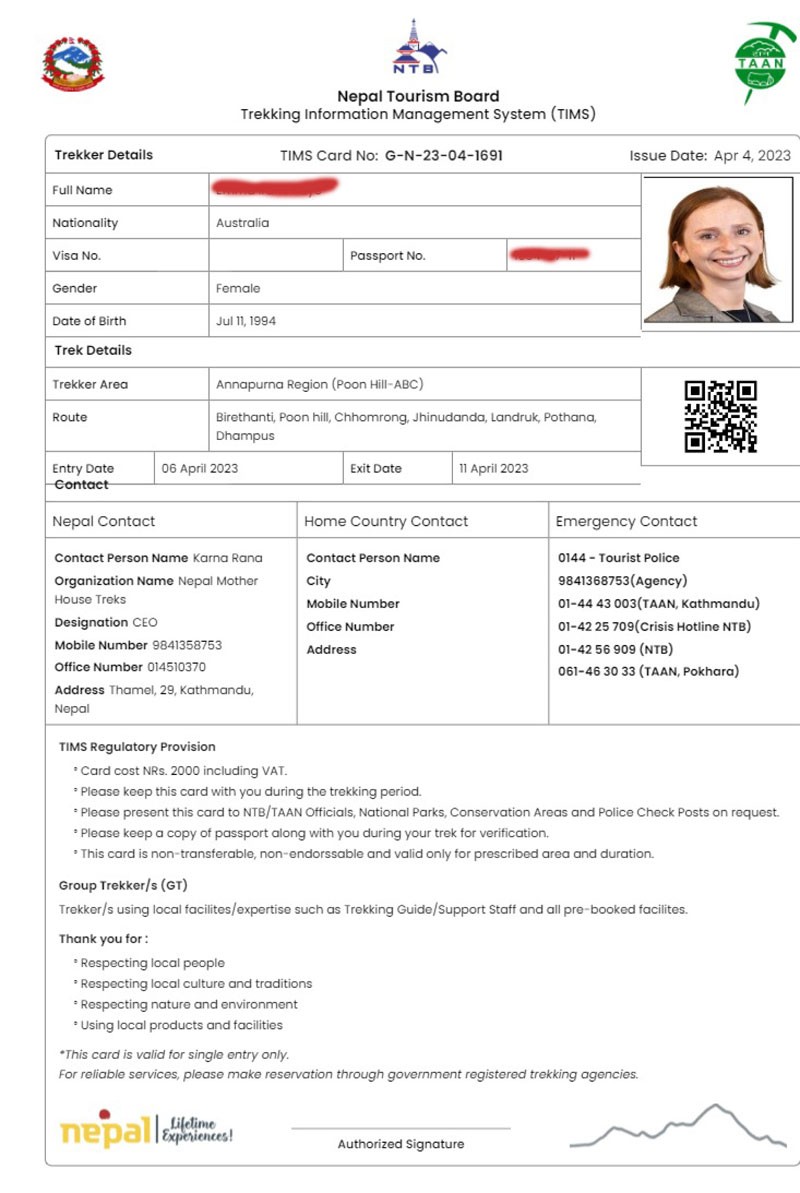
The Trekking Agencies Association Nepal (TAAN) issues the TIMS card, which is necessary for most trekking trails, including the Upper Mustang. The fee for the TIMS card is approximately Rs 2,000 (around $16) per person
[III] Annapurna Conservation Area Permit (ACAP)
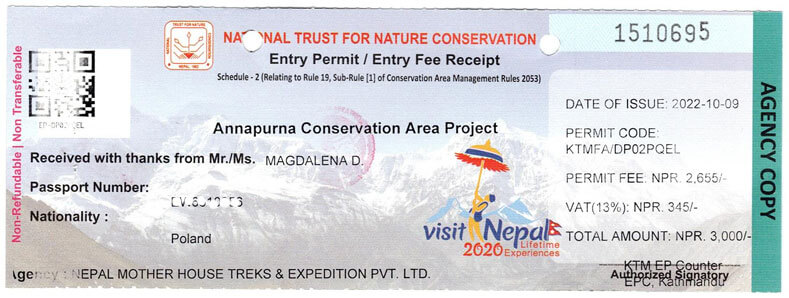
The Nepal Tourism Board (NTB) issues the ACAP, which is necessary to enter the Annapurna Conservation Area. The trekking permit can be obtained from NTB offices in Kathmandu or Pokhara and costs Rs 3,000 (around $24). It is valid for a single trip only.
Do you need a trekking guide for the Upper Mustang Trek?
Yes, a trekking guide is mandatory in the Upper Mustang Trek, as the region is a restricted area of Nepal. Not only in Upper Mustang but also in other restricted areas like the Manaslu region, the Nar Phu area, Kanchenjunga, and other areas, a guide.
Furthermore, trekking guides offer valuable benefits. They share historical insights about the area, assist in decision-making, provide aid when you're unwell, secure the best accommodations, and ensure a stress-free and enjoyable trekking experience.
How to reach the Upper Mustang Trek?
There are several ways to get to the Upper Mustang Trek. Mainly, there are three means of transportation to reach there. They are:
By Jeep/Bus
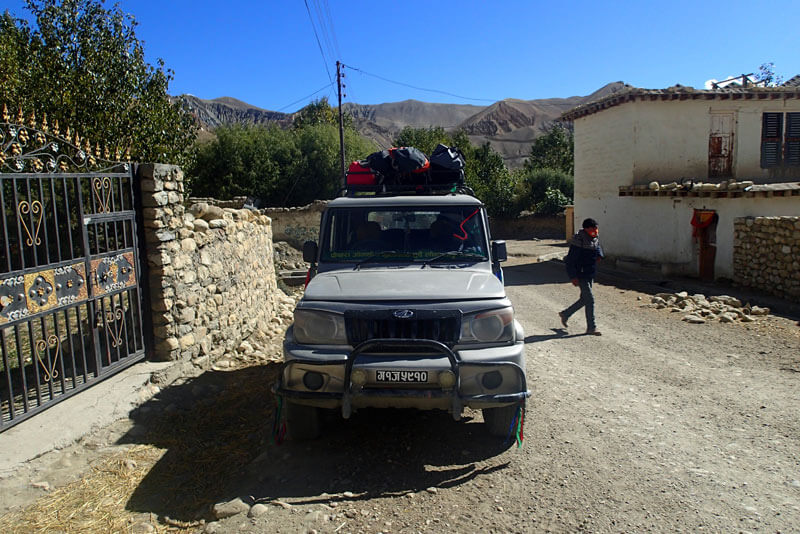
Let's say it is road transportation. Several buses leave from Kathmandu and Pokhara towards Mustang. All you have to do is get a ticket and get on a long ride. Also, you can hire a private tutor, which will be convenient and time-saving. Furthermore, keep in mind that sometimes the road is closed due to landslides and minor problems during monsoon season.
By Flight
Flight is the best and easiest way to reach Upper Mustang. But the flight takes off from Pokhara Airport to Jomsom Airport. After Jomsom, you can either trek or catch a jeep to the Upper Mustang. The flights are usually taken during the morning due to windy conditions in Jomsom in the afternoon.
By Helicopter
The helicopter is the fastest and most convenient option that takes you to the target destination. However, it is the most expensive choice on the list. As the helicopter can take you to any location, which helps shorten the duration of the trek and makes for a more flexible itinerary.
Best Time to Visit Upper Mustang Trek.
The best time to visit the Upper Mustang Trek is during spring (March) and autumn (September-November), as the weather is pleasant with clear skies, and it coincides with Nepal's peak trekking season.
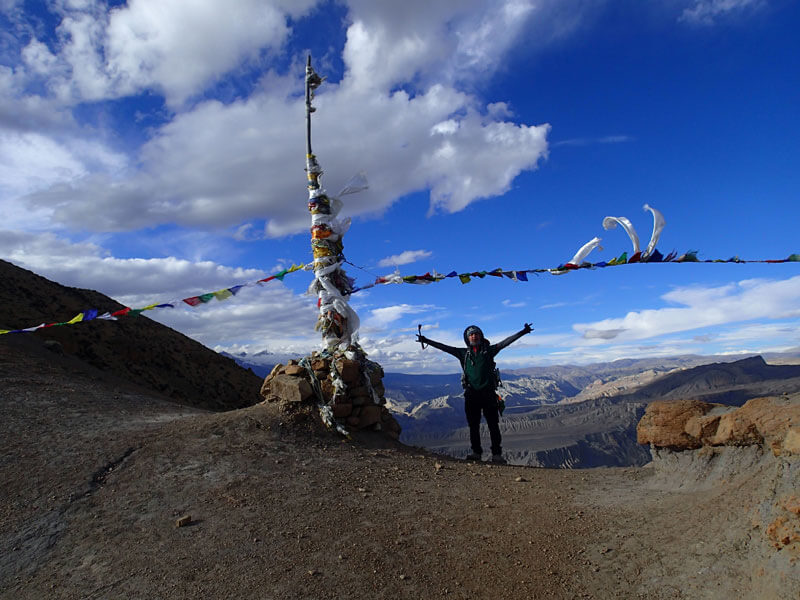
The region remains accessible during the monsoon season due to its rain-shadow location, experiencing lower rainfall than other areas. However, challenges such as road closures and flight delays may arise. With adequate preparation and flexibility, trekking during the monsoon can still be rewarding. The Upper Mustang Trek is ideal during the monsoon season due to its geographic diversity.
Winter offers less crowded trails and improved visibility, but the weather can be colder than usual. Packing warm clothes is essential for a comfortable experience. Additionally, pre-peak and post-peak seasons can be excellent alternatives for visiting the Upper Mustang Trek.
How is the weather on the Upper Mustang Trek?
The weather in the Upper Mustang trek is generally chilly and cold. The settlements in this region are located above 3,000 meters, and the villages are exposed to winds from the Himalayas, contributing to the cold environment with a constant cold breeze. However, it's not cold at all times.
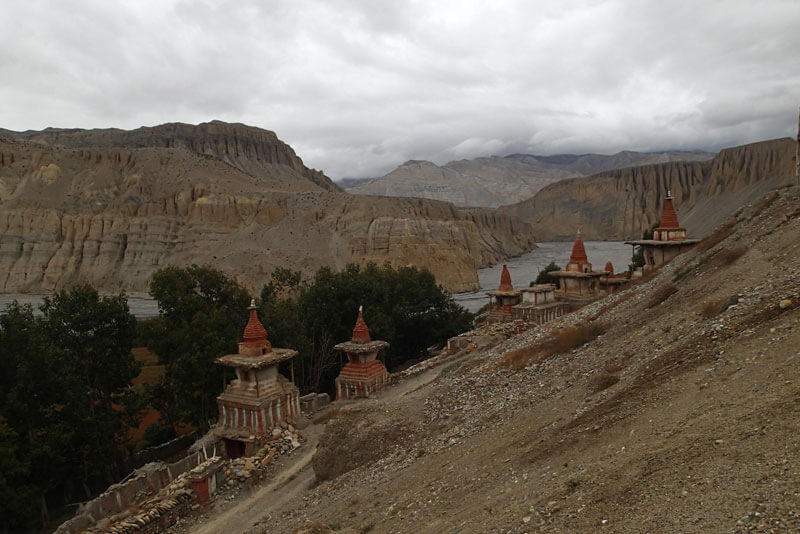
During summer, the temperature can get warmer than usual due to the intense sunlight. But as the sun sets, the temperature drops, and you may need to layer up with extra clothes for the night.
Where to visit during the Upper Mustang Trek.
Upper Mustang has numerous spots to visit during the trek. Here are some lists you should not miss during your Upper Mustang Trek:
Inside the wall of Lo-Manthang
Lo Manthang holds its prominent allure for a reason. Concealed within its walls lie numerous hidden gems, including several Buddhist monasteries, charming tea houses, and, notably, an ancient royal palace.
Jhong Cave at Chhoser Village
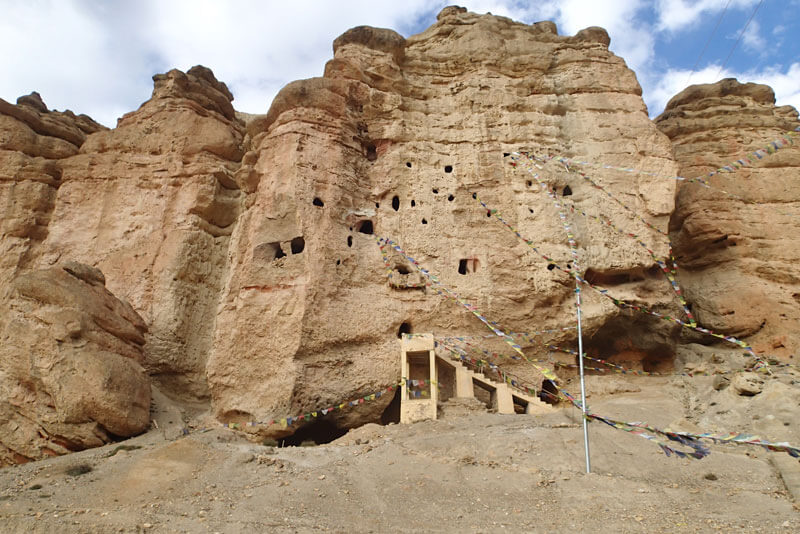
Jhong Cave is a fascinating archaeological site, attracting explorers and history enthusiasts alike. The Jhong cave is an immaculate cavern with several layers, serving as evidence of early human existence. This remarkable cave provides insights into the lifestyle of ancient inhabitants, showcasing their way of life.
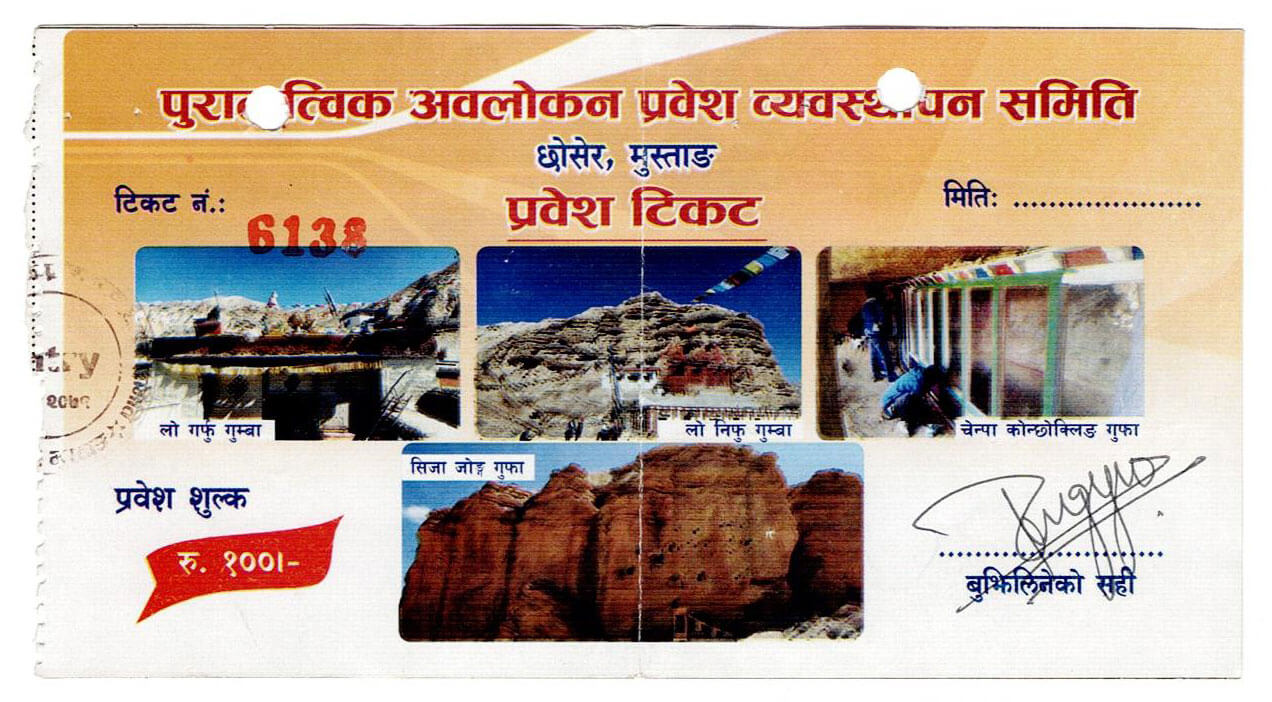
Kora La-Tibet Border
The Kora La Pass, positioned at an altitude of 4,660 meters, is a high mountain pass located on the border between China and Nepal. The journey to the key offers a breathtaking and awe-inspiring view. The pass holds cultural significance as it has been historically used as a trade route between the two neighboring countries.
Dhakmar Village
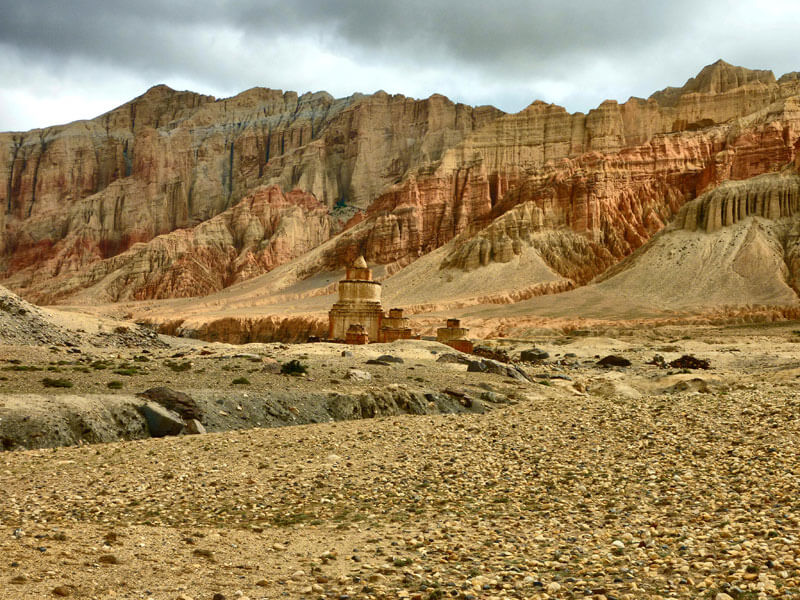
- Amazing Rock near Dhakmar Village
Dhakmar, a quaint village in Upper Mustang, is famous for its striking Red Cliff, which, according to local beliefs and legends, acquired its vibrant crimson color when a god triumphed over an evil demon, staining the cliff with the demon's blood. Additionally, below Dhakmar, you can find the longest Mani wall in Mustang, which, according to folklore, was constructed using the demon's intestine.
Ghar Gompa
Ghar Gompa, located above Saukre Village, stands above Lo Gekar Monastery, making it possible to visit both monasteries in a single day. The Ghar Gompa is renowned for its abundance of thangka paintings and is believed to have been constructed in the 8th century. It holds great significance as a pure virtue of the sacred Lo scriptures of Padmasambhava.
Chungshi Rangjung Cave.
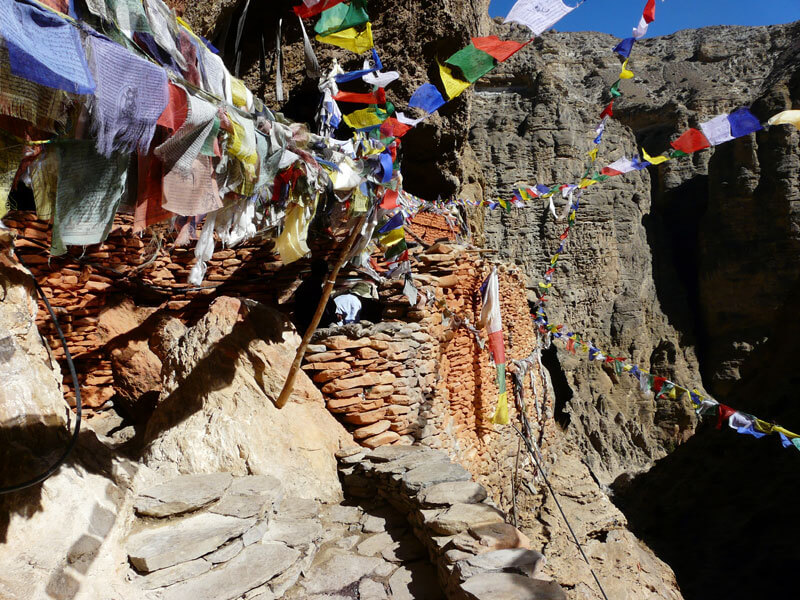
Chungsho Rangjung Cave is situated along the alternate route towards Syangboche village during the trek. This cave, nestled inside a cliff, holds significant religious importance and is adorned with exquisite Jeep and Thangka paintings. Many religious rituals take place within the cave, making it a worthwhile detour on the way to Syangboche.
Luri Gompa.
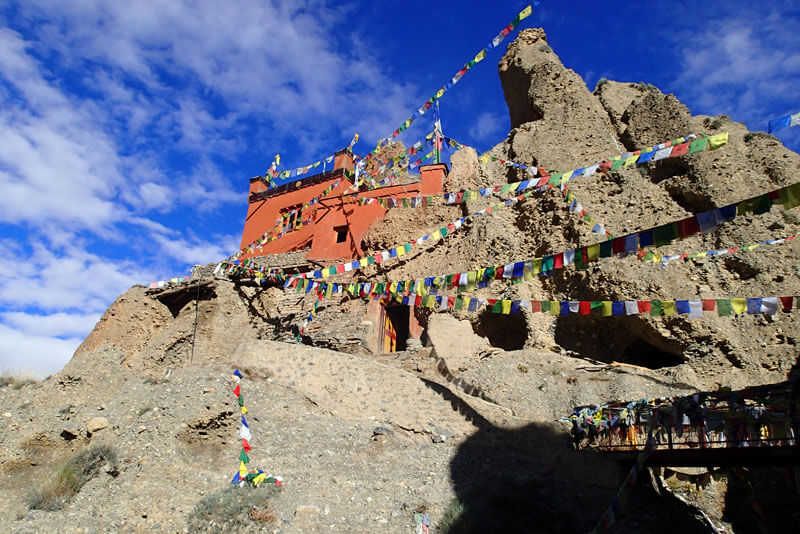
Luri Gompa is a hidden gem in Upper Mustang, located just an hour away from Gara Village via Ghara Village. Among the region's seven Khabungs (spiritual places formed naturally), Luri Gompa stands out. Inside the small cave, you'll find a mesmerizing small stupa and captivating paintings that have retained their charm despite never being repainted.
Muktinath Temple.
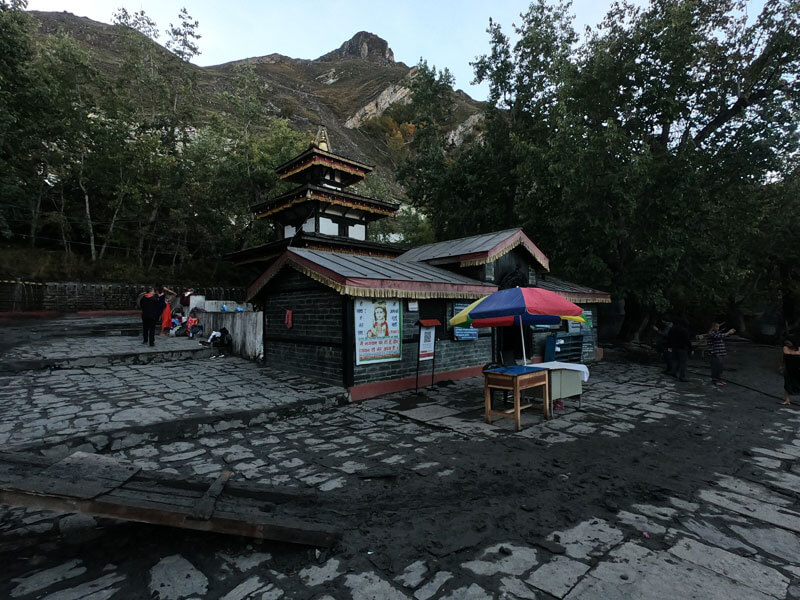
While Muktinath Temple is not located within Upper Mustang, it serves as the gateway to the region. It is highly recommended to set aside time for exploring the temple and its surroundings. This sacred site holds immense religious importance for both Hindus and Buddhists and is known as the Temple of Salvation. A ritual of showering in its 108 water sprouts is believed to cleanse one of all sins.
These are some of the must-visit places in Upper Mustang. There are other alluring spots that we will share with you soon.
What to expect in the Upper Mustang Trek.
The Upper Mustang Trek stands as one of Nepal's finest trekking routes. Along the main trails, you can expect to find ample teahouses offering comfortable accommodations, delightful food services, and warm hospitality. Let's explore what awaits during the trek in Upper Mustang:
Trekking trail.
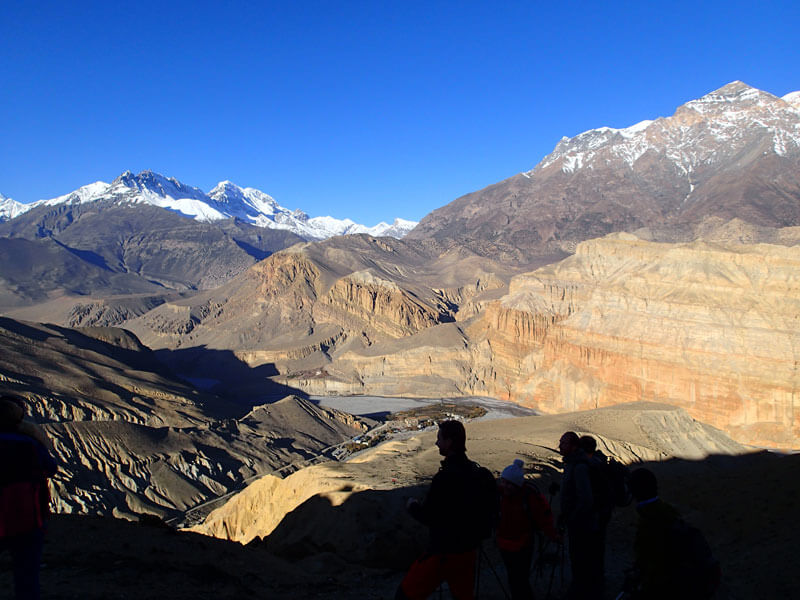
The Upper Mustang trekking trail is primarily an unexplored route, distinguished by its dry and dusty environment. The journey involves various ascents and descents, yet the course itself is not overly complex. The desert-like surroundings result in sandy and pebbly terrain with scarce vegetation and trees.
Foods and drinks.
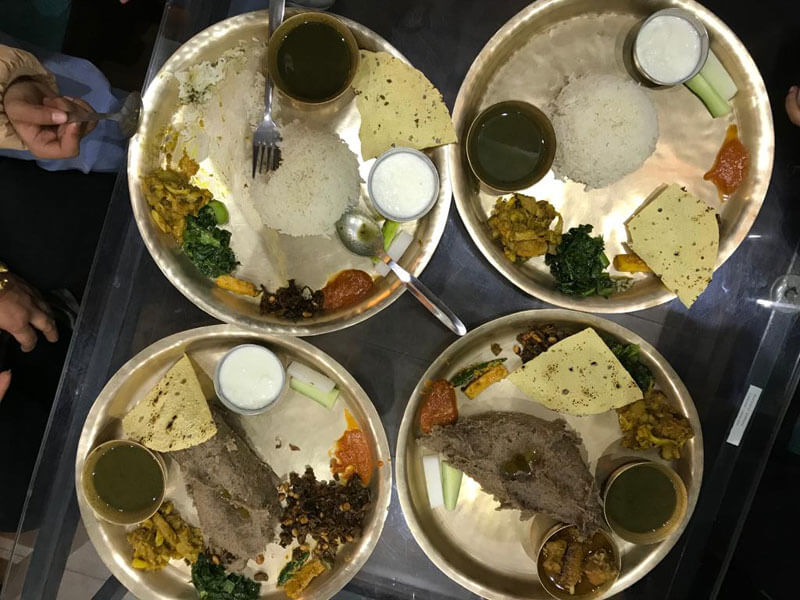
The teahouses in Upper Mustang offer a delectable array of dishes, ranging from local cuisine to continental delicacies. Their menu includes freshly prepared foods sourced from the garden, minimizing the risk of food poisoning. Moreover, you can enjoy a wide selection of food and beverages, both hot and cold, including alcoholic and non-alcoholic options.
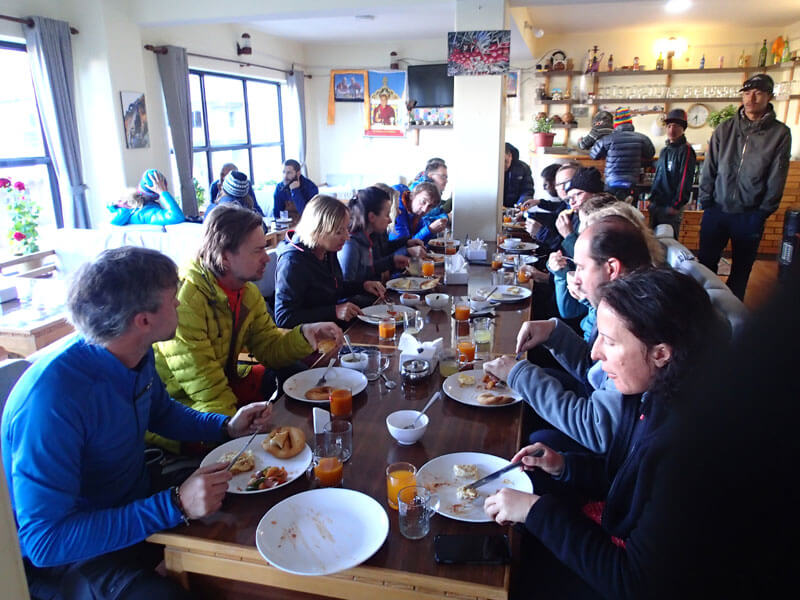
Drinking Water.
While the Upper Mustang Trekking region may seem dry with limited water resources, there is no shortage of safe drinking water. Every tea house provides access to drinking water, available for $1 to $2 per liter. To be prepared, carrying a water filter or purifier is a wise suggestion.
Accommodations.
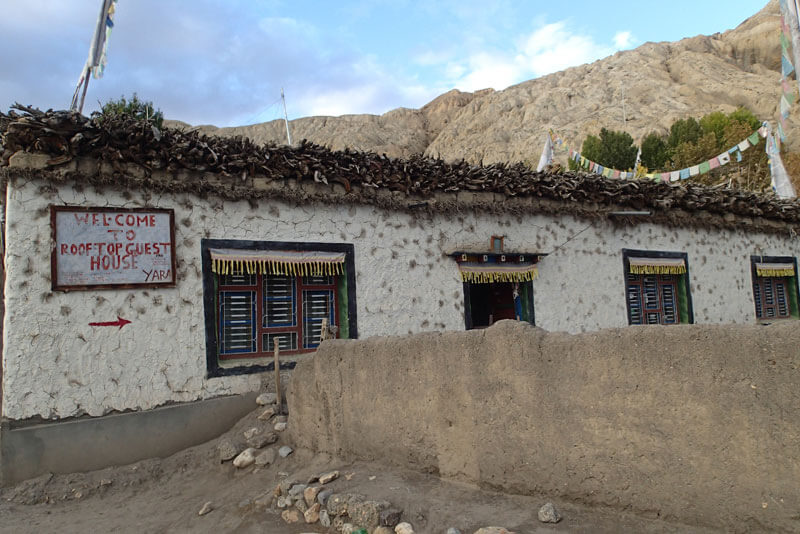
The Upper Mustang Trek offers top-notch accommodation services with clean and well-maintained bedrooms, bedsheets, and blankets. Many tea houses also provide Western toilet facilities. The spacious dining halls can accommodate a good number of guests, and the tea house architecture beautifully reflects the design of traditional houses.
Wi-Fi and connectivity.
It is remarkable to find a well-established network of Nepal Telecom (NTC) and Ncell in this remote Himalayan region. Some parts of Upper Mustang even have access to NTC's 4G services, allowing trekkers to use mobile data for internet connectivity. Additionally, many teahouses offer wifi services, enabling trekkers to stay connected with the world even in remote areas.
Different Upper Mustang Itinerary and Time Required.
The itinerary and route for the Upper Mustang Trek can vary depending on individual plans and available time. Below, we will present various itineraries and routes for Upper Mustang, along with the time required to trek to specific destinations.
Upper Mustang Trek Main Route (via Ghemi)
Jomsom to Ghemi.
| From |
To |
Trek Time |
| Jomsom |
Kagbeni |
2.5 hours. |
| Kagbeni |
Tange |
2.5 hours. |
| Tange |
Chhusang |
1.5 hours. |
| Chhusang |
Chele |
2 hours. |
| Chele (via Taklam La, Dajori La) |
Samar |
3 hours. |
| Samar (via Rangchyung Cave) |
Syangboche |
5 hours. |
| |
OR |
|
| Samar (via Bhena) |
Henna |
2 hours |
| Bhena (via Yamda La) |
Syangboche |
2.5 hours. |
| Syangboche (via Syangboche La) |
Gilling |
3 hours. |
| Ghiling (via Nyu La, Ghemi La) |
Ghemi |
4 hours. |
Ghemi to Lo Manthang via Charang.
| From |
To |
Trek Time |
| Ghemi (via Tsarang La) |
Charang |
4 hours |
| Charang |
Lo Manthang |
5 hours. |
Ghemi to Lo Manthang via Marang (Ghar Gompa)
| From |
To |
Trek Time |
| Ghemi |
Dhakmar |
2 hours. |
| Dhakmar (via Mui La) |
Lo Gekar |
2.5 hours. |
| Lo Gekar (via Marang La) |
Lo Manthang |
7 hours. |
Alternative route (via Luri Gumba)
Jomsom to Lo Manthang
| From |
To |
Trek Time |
| Jomsom |
Kagbeni |
2.5 hours |
| Kagbeni |
Muktinath |
5 hours. |
| Muktinath (via Gyu La) |
Tetang |
6.5 hours. |
| Tetang |
Chhusang |
45 minutes. |
| Chhusang (Paha La) |
Tangge |
11 hours. |
| Tangier |
Dhechyang Khola |
4 hours. |
| Dhechyang Khola |
Yara |
3 hours. |
| Yara |
Luri Gumba |
2.5 hours. |
| Luri Gumba |
Ghara |
1.5 hours. |
| Ghara |
Yara |
1 hour. |
| Yara |
Dhi |
1 hour. |
| Dhi |
Lo Manthang |
5 hours. |
Furthermore, the travel time from Kathmandu to Pokhara is a short 30-minute flight or an 8-hour road journey. From Pokhara to Jomsom, a scenic flight takes approximately 20 minutes to reach Jomsom Airport, while a road trip can take more than 8 hours. For those seeking a more adventurous experience, trekking from Pokhara to Jomsom can take around 5 days.
Navigating the Upper Mustang Trek with a Map.
Here is the map of the Upper Mustang Trek:
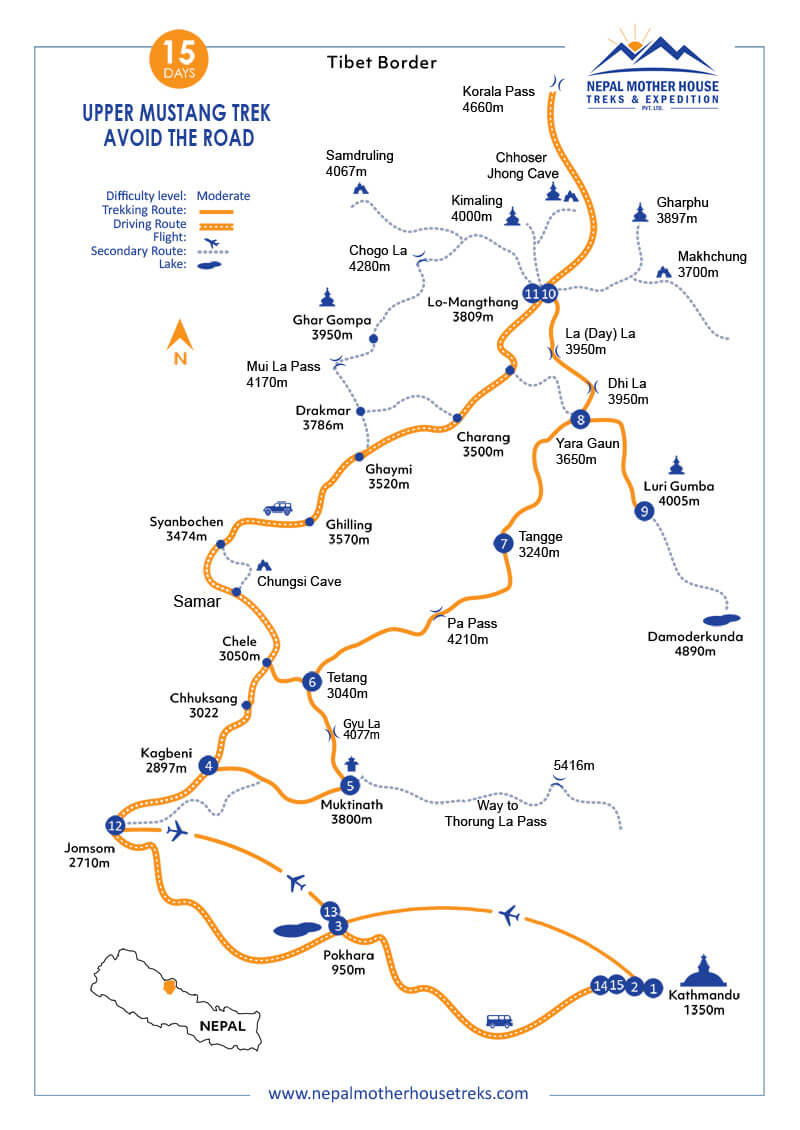
Details on Upper Mustang Trek Height.
Here is the table showcasing the detailed height of various villages and settlements in Upper Mustang:
| S.N. |
Name of settlements |
Height (Meters) |
Height (feet) |
| 1. |
Chhusang |
2,980 meters. |
9,775 feet. |
| 2. |
Chele |
3,050 meters. |
10,004 feet. |
| 3. |
Samar |
3,660 meters. |
12,005 feet. |
| 4. |
Tetang |
3,040 meters. |
9,971 feet. |
| 5. |
Syanboche |
3,800 meters. the Upper |
12,464 feet. |
| 6. |
Ghami |
3,520 meters. the Upper |
11,545 feet. |
| 7. |
Tangge |
3,340 meters. |
10,955 feet. |
| 8. |
Dhakmar |
3,829 meters. |
12,560 feet. |
| 9. |
Charang |
3,560 meters. |
11,676 feet. |
| 10. |
Ghar Gompa |
3,950 meters. |
12,956 feet. |
| 11. |
Yara |
3,650 meters. |
11,972 feet. |
| 12. |
Luri Gompa |
3,850 meters. |
12,628 feet. |
| 13. |
Lo Manthang |
3,840 meters. |
12,595 feet. |
| 14. |
Chooser |
3,970 meters. |
13,021 feet. |
So, these are some of the major villages in Upper Mustang. Below we have the height of some passes in Upper Mustang:
| S.N. |
Name of Pass |
Height (meters) |
Height (feet) |
| 1. |
Gyu La |
4,077 meters |
13,372 feet. |
| 2. |
Taklam La |
3.624 meters. |
11,887 feet. |
| 3. |
Dajori La |
3,735 meters. |
12,250 feet. |
| 4. |
Bhena La |
3,860 meters. |
12,660 feet. |
| 5. |
Yamda La |
3,860 meters. |
12,660 feet. |
| 6. |
Syangboche La |
3,850 meters. |
12,628 feet. |
| 7. |
Baha Bhanjyang |
4,380 meters. |
14,366 feet. |
| 8. |
Paha La |
4,218 meters. |
13,835 feet. |
| 9. |
Nyi La |
4,010 meters. |
13,153 feet. |
| 10. |
Ghami La |
3,765 meters. |
12,350 feet. |
| 11. |
Mui La |
4,170 meters. |
13,677 feet. |
| 12. |
Lo (Day) La |
3,950 meters. |
12,956 feet. |
| 13 |
Kora La |
4,660 meters. |
15,285 feet. |
So, some passes lie in Upper Mustang. They are not complicated like other technical passes. Also, most of them will not be included during your visit to the Upper Mustang trek.
Altitude Sickness in Upper Mustang Trek.
In contrast to many other trekking routes, the Upper Mustang Trek poses a lower risk of altitude sickness. The trek's elevation does not reach extreme heights, with the highest point being approximately 4,000 meters above sea level and not exceeding 5,000 meters.
For first-time experiences above 3,000 meters, there's a possibility of altitude sickness. However, numerous prevention methods exist, and being aware of its symptoms is crucial, such as:
- Headache
- Nausea
- Loss of appetite
- Fatigue
- Dizziness
- Short of breath
Some of the prevention methods include:
- Drinking plenty of water
- Eat high-calorie diet
- Ascend slowly.
- Avoid alcohol and smoking
- Separate a rest day (acclimatization day)
- Start trekking from a low altitude.
If there are any symptoms of altitude sickness, take these steps
Take Acetazolamide (Diamox) for the treatment
- Rest as much as you can
- Have some garlic soup
- Descend to the lower settlements.
Furthermore, a trekking guide will accompany you, providing valuable assistance during critical situations.
How Hard is the Upper Mustang Trek?
The Upper Mustang Trek is classified as a moderate-level trek, striking a balance between difficulty and ease. While it may be challenging for first-time or beginner trekkers, it becomes much more effortless for experienced seasonal trekkers.
Regardless of your experience level, being physically fit is strongly advised before embarking on the trek. Engaging in physical fitness activities beforehand will prove beneficial. Though the journey may become tiring after several days of walking, the result will undoubtedly be rewarding.
Packing list for Upper Mustang Trek.
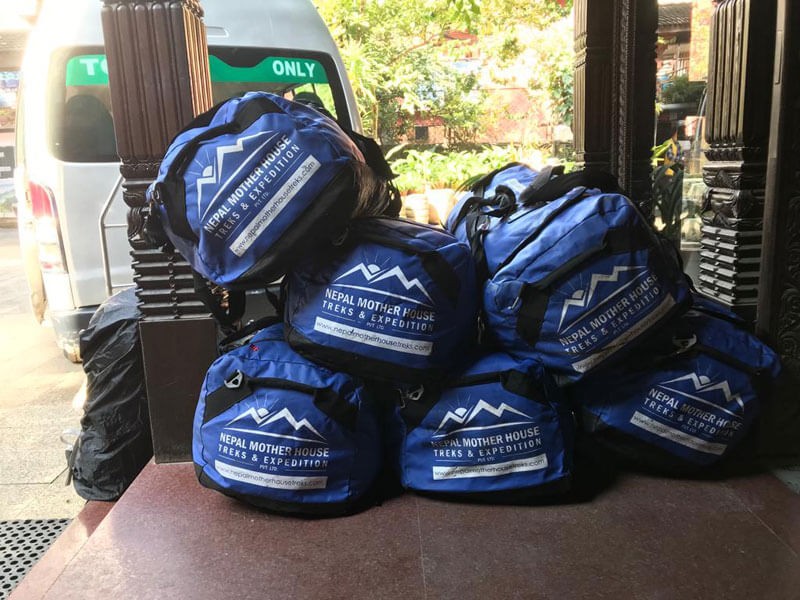
While going on the multi-day trek in the Himalayas, it is very important to pack a backpack wisely. The main things to pack while going for the Upper Mustang Trek are essential clothing, medications, and toiletries. The packing list for the Upper Mustang Trek:
Clothing:
- Brimmed Cap or Hat.
- Warm cap.
- Neck warmer.
- Down jacket.
- A pair of warm trousers.
- Warm thermals.
- Windcheater or rain jacket.
- T-shirts.
- Gloves.
- Undergarments.
- Sports bra (for women).
- Hiking pants.
- Socks.
- Hiking boats.
- Slippers.
Accessories and Equipment:
- Backpack (30 L - 50 L).
- Sunglasses.
- Trekking poles.
- Sleeping bag (optional)
- Water bottles.
- Lightweight towel.
Miscellaneous items:
- Water filter or purifier.
- Power Bank/Portable Charger.
- Nepali SIM.
- Type C adapter.
- Snacks/chocolate/energy bar.
- Nail clippers.
- First Aid.
- Medication.
- Toiletries.
- Toilet paper.
- Hand Sanitizer.
- Toothbrush and toothpaste.
- Soap and shampoo.
- Detergents.
- Moisturizer cream.
- Sunblock cream.
- Tampons or sanitary pads (for women).
The following items are recommended for your packing list for the Upper Mustang trek. While they are essential, keep in mind that they are not mandatory. Therefore, pack thoughtfully before starting on your trekking journey.
9 Days 8 Nights Upper Mustang Tour by Jeep
If you are looking to explore the Upper Mustang Hidden Treasure in a short time, then it can be completed in 9 days and 8 nights. This tour is suitable for elderly people of age who want to escape longer adventure hikes with luxury amenities for the entire tour but still want to enjoy nature and unique culture. Here is the Upper Mustang Overland Tour by jeep from Pokhara or Kathmandu.
9 Days 8 Nights Upper Mustang Trip Proposed Itinerary by Road:
Day 00: Arrival at Kathmandu and Transfer to the Hotel.
Day 00: Trekking preparation and permit paperwork day.
Day Day 00: Drive Kathmandu to Pokhara (950 m)—6 to 7 hours by tourist bus/Private Jeep or Fly back to Pokhara to Kathmandu—30 minutes
Day 01: Drive Pokhara to Jomsom to Kagbeni (long but scenic drive)—7 to 8 hours
Day 02: Explore Day at Kagbeni, Red Gumba, village, Staying overnight at Hotel
Day 03: Drive Kagbeni to Dhakmar (3,820 m)—2 to 3 Hours, Staying overnight at Hotel
Day 04: Explore day at Dhakmar, amazing rock formation, ancient monastery, Staying overnight at Hotel
Day 05: Drive Dhakmar to Lo Manthang via Tsarang Village—2 to 3 Hours, Staying overnight at Hotel
Day 06: Explore Lo-Mangthang (Royal Palace, Monastery, forts, etc.), Staying overnight at Hotel
Day 07: Explore Lo-Mangthang and drive to Kora La (Nepal-Tibet border) and Choser Cave. Staying overnight at Hotel
Day 08: Drive Lo-Mangthang to Jomson by Jeep—5 to 6 hours by Jeep, Staying overnight at Hotel
Day 09: Drive to Jomsom to Pokhara (long but scenic drive)—6 to 7 hours
Day 00: Drive back to Kathmandu early in the morning by tourist bus (6 to 7 hours). Or Fly back to Pokhara to Kathmandu—30 minutes
Day 00: Your destination.
**Note: Except for restricted area data, if you wish to introduce changes to the itinerary during the trek, you are free to speak with your guide. The itinerary is flexible according to your requirements.
If you have any modifications to the trip itinerary, you can make your own tailor-made itinerary also.
Explore the Upper Mustang Trek in Video:
Travel Responsibly.
Traveling responsibly is crucial in the sensitive region of the Upper Mustang Trek. Here are some guidelines for responsible travel:
● Follow designated trekking trails to minimize environmental impact.
● Avoid littering and carry all waste back with you.
● Respect local customs, traditions, and cultural sites.
● Dress modestly before visiting any monasteries.
● Purchase and consume locally sourced products to support the local economy.
● Stay in designated accommodations to preserve the natural surroundings.
● Be mindful of wildlife and refrain from disturbing or feeding them.
● Limit the use of single-use plastic and opt for eco-friendly alternatives.
● Support sustainable tourism practices that benefit local communities.
● Engage with local guides and porters, ensuring fair wages and respectful treatment.
Conclusion
In summary, Upper Mustang offers an outstanding trekking experience with thrilling adventures and possible challenges. Prior knowledge of the trail is essential before embarking on the journey. The purpose of this complete guide to the Upper Mustang Trek is to provide fundamental insights about the trail. We hope it has been beneficial, and stay tuned for more information in the future.
